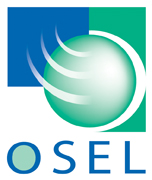Takahashi M, Taguchi H, Yamaguchi H, Osaki T, Komatsu A, Kamiya S. FEMS Immunol Med Microbiol. 2004 Jul 1;41(3):219-26.
Synopsis: Enterohemorrhagic Escherichia coli (EHEC) O157:H7 has been considered as an agent responsible for outbreaks of hemorrhagic colitis and the hemolytic uremic syndrome. We examined the effect of the probiotic agent Clostridium butyricum MIYAIRI strain 588 on EHEC O157:H7 infections in vitro and in vivo using gnotobiotic mice. The growth of EHEC O157:H7 and the production of Shiga-like toxins in broth cultures were inhibited by co-incubation with C. butyricum. The antibacterial effects of butyric and lactic acid were demonstrated in a dose-dependent manner. In addition, the inhibitory effect of butyric acid on the viability of EHEC was demonstrated not only at low pH, but also at neutral pH adjusted to 7.0. Flow cytometric analysis showed that pre-incubation of Caco-2 cells with C. butyricum and E. coli K12 inhibited the adhesion of EHEC O157:H7. However, the effect of C. butyricum on adhesion of EHEC to Caco-2 cells was more inhibitory than that of E. coli K12. Gnotobiotic mice mono-associated with EHEC O157:H7 died within 4-7 days after the infection. In contrast, all gnotobiotic mice prophylactically pre-treated with C. butyricum survived exposure to EHEC O157:H7. Of the gnotobiotic mice therapeutically treated with C. butyricum following EHEC O157:H7 infection, 50% survived. Both the counts of EHEC O157:H7 and the amounts of Shiga-like toxins (Stx1 and Stx2) in fecal contents of gnotobiotic mice associated with EHEC O157:H7 and C. butyricum were less than those of gnotobiotic mice mono-associated with EHEC O157:H7. These results indicated that C. butyricum MIYAIRI 588 has preventive and therapeutic effects on EHEC O157:H7 infection in gnotobiotic mice.
.
.
